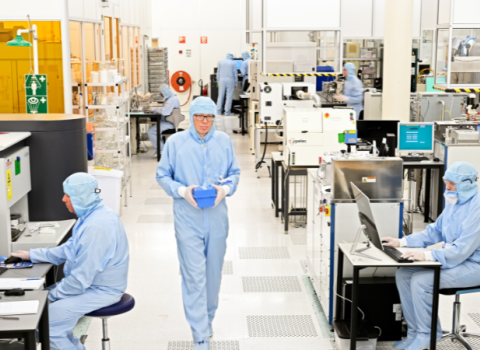The European automotive sector is facing a critical turning point. The sector – historically a key pillar of the European economy – is now in front of a defining challenge: how to decarbonise while remaining competitive and aligning with the growing need for open strategic autonomy. This trilemma is more than just a challenge for manufacturers. It is a make-or-break test of the EU’s ability to shape its own industrial future.
The European Commission’s recently unveiled Action Plan for the Future of the Automotive Industry (Action Plan) aims to provide clarity after months of deliberation with industry leaders, formalised in a Strategic Dialogue on 30 January 2025. While the European Commission has presented it as a comprehensive roadmap for the sector, doubts persist about its effectiveness in balancing the EU’s climate ambitions, industrial competitiveness and strategic autonomy.
A plan fit for the purpose?
The Action Plan outlines a series of measures designed to facilitate the EU’s automotive sector’s smooth transition to decarbonisation while maintaining its global leadership. Key objectives include strengthening the EU’s industrial base by expanding battery manufacturing and the electric vehicles (EV) value chain, fostering innovation in advanced manufacturing technologies to keep automakers competitive and harmonising national regulations across EU member states to ensure a unified framework. These initiatives are designed to address persistent concerns raised by industry leaders. However, as with any roadmap, the true challenge lies in execution.
The Action Plan marks progress toward a more resilient EU automotive industry, but its ability to balance decarbonisation, competitiveness and strategic autonomy is yet to be confirmed. Neglecting any one of these dimensions risks triggering a domino effect that could weaken the EU’s industrial base. Moreover, the Action Plan is seen as only the first step in addressing regulatory fragmentation, which remains a barrier to investment in EV infrastructure. Concerns remain that further action is needed to prevent manufacturers from dealing with conflicting national policies. The European Commission now faces the challenge of turning rhetoric into reality, ensuring that regulatory coherence is not just an aspiration, but a cornerstone of the EU’s automotive transition.
EIT Manufacturing community also highlights the need for strategic clarity and consistency: “The European automotive sector needs clarity, stability and strong industrial policies to stay competitive globally. We cannot afford a fragmented approach. This is about securing jobs, investments and technological leadership for the decades ahead.”
Is there decarbonisation without deindustrialisation?
The EU has set ambitious targets for decarbonisation, but regulatory uncertainty and fragmented policies risk stifling investment.
The European Commission’s Action Plan introduces a three-year compliance window for CO2 targets, addressing a key industry concern voiced by the European Automobile Manufacturers’ Association (ACEA). This adjustment is intended to provide car and van manufacturers with greater regulatory predictability, facilitating an orderly transition towards decarbonisation while mitigating economic and technological disruptions. Nevertheless, the lack of a clear commitment to reviewing CO2 standards for heavy-duty vehicles in 2025 remains a concern. ACEA has warned that without such a review, manufacturers of trucks and buses could face high compliance costs, potentially shifting production to regions with weaker regulations.
Moreover, the Action Plan does not explicitly incorporate e-fuels or hybrid solutions as viable long-term alternatives to full electrification. However, the decision of the European Commission to endorse “technological neutrality” as a guiding principle for connected overarching initiatives, such as the Clean Industrial Deal, could signal an openness to reassessing the role of such technologies in certain segments down the line.
Without regulatory flexibility, EU manufacturers may find themselves on a decarbonisation path that is more costly than that of their competitors, which may undermine their global competitiveness and position in global supply chains.
Competing in an uneven global market
China’s dominance in EV production and battery supply chains, combined with the Inflation Reduction Act’s industrial subsidies in the United States, introduced during the mandate of President Biden, has created challenges for the EU in maintaining its competitive edge.
The EU’s battery strategy is taking shape with a bold but measured push for self-sufficiency. The Action Plan champions a “Choose Europe” approach, seeking to anchor more than 50% of the battery supply chain’s value within the continent by 2030. Central to this effort is the Battery Booster package, a mix of funding streams, relaxed state aid and other initiatives designed to boost EU added value. The Action Plan also pledges additional support for battery recycling and industrial cooperation in this area, including funding for recycling facilities.
Yet, industry stakeholders argue that these efforts do not go far enough. To level the playing field, the EU must prioritise scaling battery manufacturing through a coordinated support framework. Without a harmonised approach, fragmented measures could hinder investment, leaving EU companies struggling against China and the US, which benefit from larger, state-backed initiatives.
R&D efforts as key to increase the EU’s strategic autonomy?
The EU cannot afford to remain technologically dependent on external suppliers, particularly in critical areas such as battery raw materials, semiconductor components and vehicle connectivity systems.
The Action Plan acknowledges this need by establishing the Battery Raw Materials Access Entity to pool investments and commitments for securing critical materials. It also accelerates permitting procedures for an increased selection of refining projects beyond the scope of Strategic Projects under the Critical Raw Materials Act.
However, to stand a chance in securing the continent’s long-term technological resilience, the European Commission agrees that innovation must be placed at the core of the EU’s strategy. The EU will seek to strengthen its leadership in semiconductor manufacturing, AI, and software-defined vehicles through the European Connected and Autonomous Vehicle Alliance, which will facilitate data sharing, standardisation and joint R&D efforts.
Caroline Viarouge, CEO of EIT Manufacturing, underscores this point: “Innovation is key to Europe's success in the automotive transition. By investing in advanced manufacturing technologies, digitalisation, and sustainable production methods, we can ensure that European automakers remain at the forefront of global competition. But the right policies must go beyond simply enabling regulatory compliance; they must foster innovation and technological leadership.”
To rebuild Europe’s competitive edge, “Europe should focus on high-end automotive, where quality, not quantity, defines its competitive edge.” said Jonas Nyvang, Founder and CEO of Stilride, a Swedish tech company focusing on manufacturing solutions for the future of mobility.
Moreover, reshoring key segments of the supply chain will be accompanied by workforce transition strategies to ensure that the EU workers are equipped with the skills needed to lead in advanced manufacturing. The Action Plan outlines initiatives under Horizon Europe, including a €1 billion funding package for the automotive sector from 2025-2027, and support for workforce upskilling.
To secure its technological future, the EU must foster a collaborative, forward-looking ecosystem that empowers both industries and workers, creating a strong foundation for the challenges ahead.
What’s next?
In light of Trump’s recent auto tariff announcement, the above elaborated Action Plan represents a defining moment for the EU industrial policy and has the potential to serve as a blueprint for a thriving automotive sector. With it, the importance of innovation in driving this transformation is clearer than ever.
The key challenge now lies in translating the promises of the Action Plan into concrete outcomes.





 A unique international forum for public research organisations and companies to connect their external engagement with strategic interests around their R&D system.
A unique international forum for public research organisations and companies to connect their external engagement with strategic interests around their R&D system.